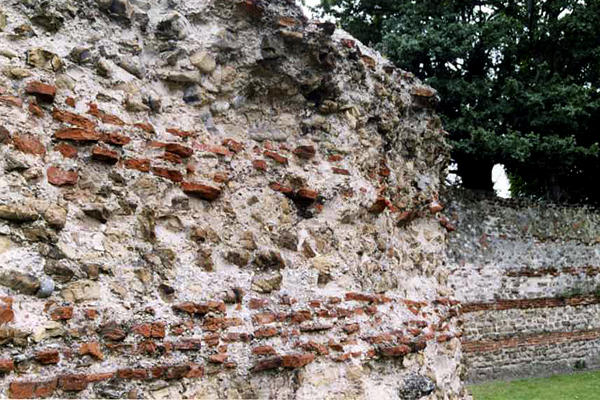

In AD 49, when Legio XX was transferred west to fight the Silures in southern Wales, Claudius established a colonia on the site of the legionary fortress, which had been built at the time of the invasion. Camulodunum, which had been the principal native tribal center, was the capital of the province,its mission, says Tacitus, "to serve as a bulwark against revolt and to habituate the friendly natives to their legal obligations" (Annals, XII.32).
At Colchester, however, the hope of the colonia was not realized. Typically, each veteran was given fifty iugera of land (approximately thirty-three acres). If there were three-thousand veterans at Colchester, that meant the confiscation, over time, of almost a hundred-thousand acres of native land. More telling, Tacitus describes the land taken from the Trinovantes who lived there as agri captivit ("captured territory"), which meant that, with authorization, a Roman could take an even greater allotment. It was this abuse that so outraged the native population and led them to join the Boudican revolt of AD 60.
There were three types of Roman towns, each of which were accorded different privileges according to their status. Coloniae were inhabited by those with Roman citizenship, including retired legionary soldiers who had completed their term of service and thereby were entitled to citizenship and a grant of land from the territory allotted to the town from the surrounding territory. As former soldiers, they could be depended upon to defend Roman interests. The coloniae helped to integrate them into civilian life, and introduced Roman law and culture to the native population. Municipia, of which the only example known is Verulamium (St. Albans), were inferior to coloniae only in their prestige. Civitates resembled municipia but were the center of the tribe (civitas). Even though civitates were Roman towns, their inhabitants remained citizens of their tribe, not the town itself.
In the aftermath of the Boudican rebellion, Camulodunum was renamed Colonia Claudia Victricensis and a wall built around it of septaria, a local stone, between brick bonding courses. It is the oldest wall in Britain. This picture is of one of the flanking guard towers next to the Balkerne Gate (the largest Roman town gate in the country), where a triumphal arch once had been erected to Claudius to commemorate his capture of the town.